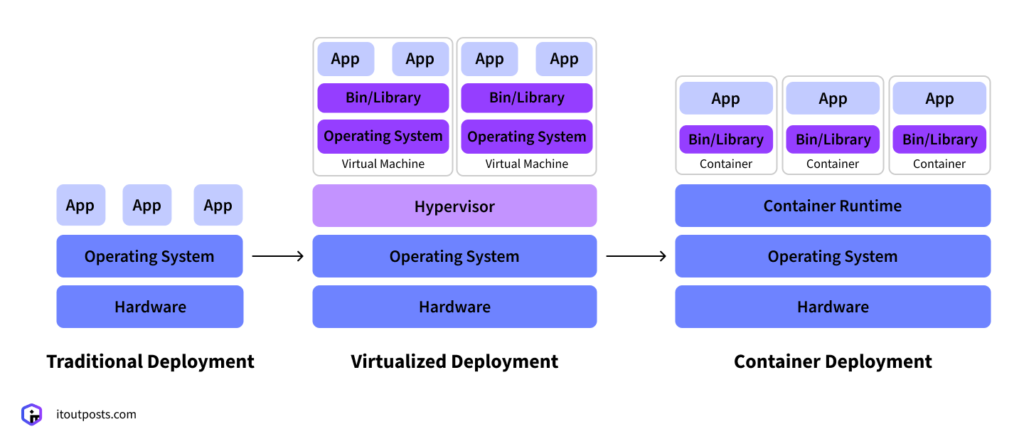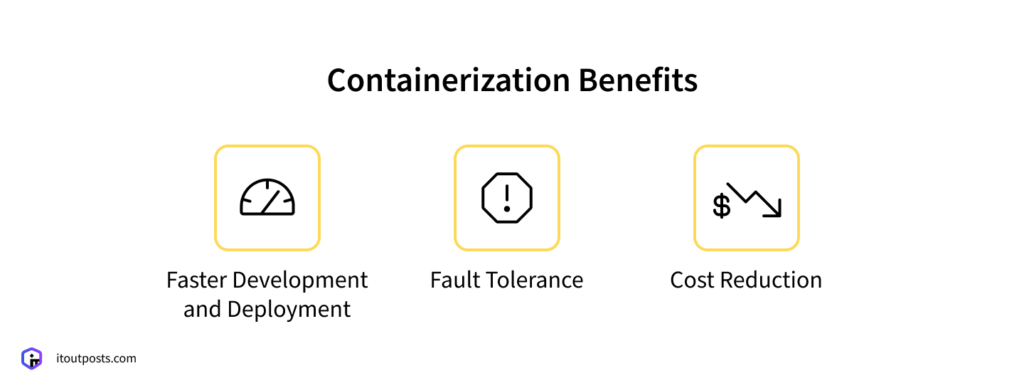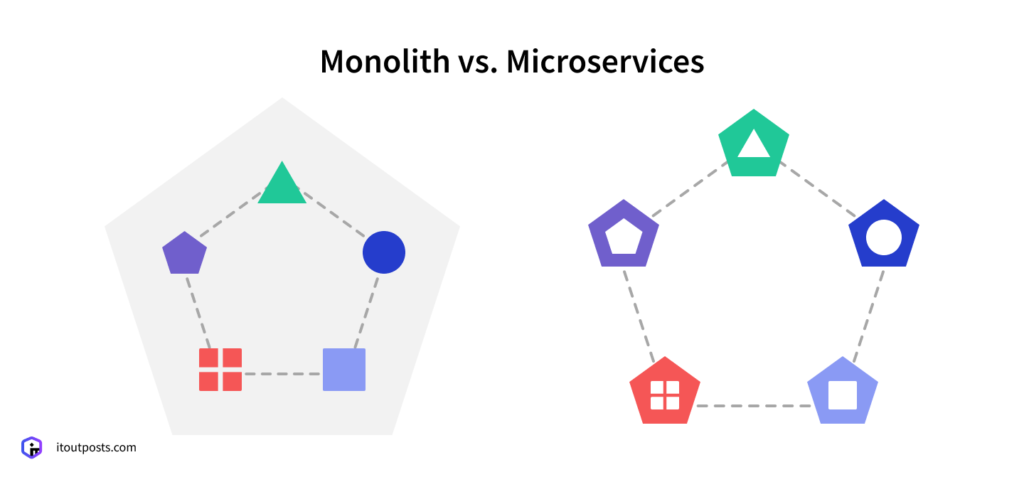Contents
Before the containerization era, software deployment used to be much more unpredictable. Environment differences, resource conflicts, and compatibility issues made the process challenging and time-consuming.
However, now, all of this has become a thing of the past. Containerization solves the fundamental problems developers faced for years.
Here’s what makes containers so effective, and when you actually need to containerize your apps.
The Evolution of Application Deployment
The way we run software has evolved through three main stages, where each fixes problems from the previous methods.Physical Server Era
In the early days, companies installed their software directly on physical servers. Each app had its own dedicated machine, and there was no way to control how much CPU, memory, or storage it used. When multiple programs shared the same server, this lead to issues. One app could take up most of the resources, so the obvious solution was one app per server. Yet, another challenge emerged, as companies ended up managing entire rooms filled with underused hardware, all while paying for electricity and upkeep for equipment.Virtual Machine Era
Virtualization did solve the core challenges of running software on physical servers. Each virtual machine (VM) created its own isolated environment where applications couldn’t interfere with each other. This made it much easier for organizations to get more out of their hardware. There was no need to buy multiple servers, as they could run several VMs on fewer physical machines.Container Era
Containers took the VM concept and made it even more efficient. While VMs have their own separate operating systems, containers share the host system’s operating system with all the applications inside them. This makes containers flexible, as they are portable across various operating systems.
What Are the Benefits of Containerization?
The container’s nature allows them to offer several benefits that explain why more and more organizations are ditching traditional deployment methods.
Faster Development and Deployment
Probably every developer has experienced the frustration of code working perfectly on their laptop but failing when deployed to production servers.
But now, with containers, developers can build once and run their apps everywhere without worrying about compatibility. They don’t have to spend time adapting software for different environments and dealing with bugs that only appear in production.
As a result, teams can roll out updates and respond to user feedback much faster.
Fault Tolerance
Container architecture makes applications more reliable by isolating different parts. Developers use containers to build microservices, where each one works on its own.
If one container has problems or stops working, the others will keep operating without any issues. This way, a small problem won’t affect the whole app. The result is systems that are more dependable and still provide a good user experience, even when some parts underperform.
Cost Reduction
Finally, all these advantages translate into what matters to leaders the most: money savings. You need fewer servers and spend less time and resources on development and deployment.

When Should You Containerize Your Apps?
Although containers help in many cases, there are specific situations where containerization is a must.You Migrate to Cloud
With containers, you can easily do a “lift-and-shift” — taking your legacy software and wrapping it in containers before moving it to a cloud platform. This way, you can modernize your infrastructure without having to rewrite the code from scratch, thanks to the portability and consistency that containers provide.You Implement Microservices Architecture
Creating modern cloud apps often means breaking down big programs into smaller pieces. This is where microservices come in. Unlike monolithic architecture, they divide an application into separate services, where each does one specific job. For example, a streaming platform might have separate microservices for user login, content delivery, and payment processing.
As we mentioned above, developers often use containers to simplify each part’s management. Containers package each service so they can be developed, tested, and launched independently across various computing environments.
When You Manage IoT Devices
IoT devices usually have limited processing power and storage, which makes traditional software updates challenging and resource-intensive. Containerization simplifies app deployment and updates across many connected devices. Developers can pack lightweight applications into containers and send out updates remotely, without exhausting device resources.
Tools for App Containerization and Container Management
But what tools actually make containerization possible? There are two core platforms that handle different aspects of the container lifecycle: building individual containers and managing them at scale.
Docker
Docker is a platform that provides tools needed to create, package, and run containers on individual machines. Docker simplifies the process of building container images and managing how applications behave across different computing environments.
Kubernetes
Docker is perfect for individual containers, but Kubernetes can manage hundreds or thousands of containers operating across different servers. It takes care of deploying, scaling, and maintaining these applications automatically. Plus, it can replace broken containers with healthy ones, preventing costly downtimes. This is the solution that powers apps millions of people rely on every day.
Conclusion
Containerization has become an essential part of modern software development thanks to quicker deployments, better use of resources, more dependable systems, and savings that make a difference to your bottom line.
If you’re planning to shift your infrastructure to the cloud or build new solutions from scratch, consider cooperating with a professional team, like IT Outposts, who have a broad experience with containerization and container orchestration.
We’re happy to help you containerize your services and offer AMIX, our ready-to-use Kubernetes-based solution that simplifies setup processes. AMIX is built on real-world experience from over 50 successful projects.
Tired of complex setups? Reach out to us, and we’ll provide immediate access to a reliable infra setup.

I am an IT professional with over 10 years of experience. My career trajectory is closely tied to strategic business development, sales expansion, and the structuring of marketing strategies.
Throughout my journey, I have successfully executed and applied numerous strategic approaches that have driven business growth and fortified competitive positions. An integral part of my experience lies in effective business process management, which, in turn, facilitated the adept coordination of cross-functional teams and the attainment of remarkable outcomes.
I take pride in my contributions to the IT sector’s advancement and look forward to exchanging experiences and ideas with professionals who share my passion for innovation and success.